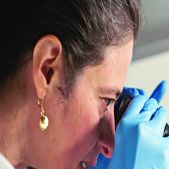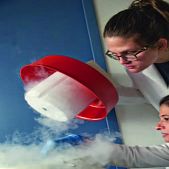
Aims to define the genetic and environmental influences that predispose individuals to obesity
Elizabeth Speliotes is gastroenterology specialist and an associate professor of internal medicine, computational medicine and bioinformatics at the University of Michigan Health System. She hopes to uncover nonalcoholic fatty liver disease’s actual pervasiveness and risk, in addition to identifying effective treatments through genetic research.
Speliotes graduated from Harvard Medical School in 2002.
She has over 15 years of diverse experience, especially in Gastroenterology. Her research is focused in Nonalcoholic fatty liver diseases, obesity and related metabolic diseases. Nonalcoholic fatty liver disease (NAFLD), now estimated to be the most common form of liver disease in the United States and worldwide, is expected to be the primary cause for liver transplantation by the end of the decade.
She has established hew own lab at Michigan University. The lab aims to further define the genetic and environmental influences that predispose individuals to obesity and NAFLD and translate that information into better ways to diagnose, manage and treat these conditions in the future.
In working with the Genetics of Obesity- Related Liver Disease Consortium, Dr. Speliotes’ team has identified five genetic loci associated with NAFLD. Using a group of approximately 7,000 people, the investigators calculated liver fat based on CT scans and carried out related genome-wide association analyses to recognize genetic patterns related to fatty liver. They then performed genetic analyses of people with NAFLD. One noteworthy finding was that genes related to NAFLD are different from those associated with obesity.
“Obesity was one of my first interests and, in part, what drove me to study fatty liver disease,” Dr. Speliotes said. “Ultimately, I do think they are linked. But in terms of genetics, it looks like the main drivers of obesity are more neurologically based, whereas the drivers that seem to be causing fatty liver disease are more lipid-and glucose-based. That changes how we think about these diseases.”
Dr. Speliotes’ team also is exploring the relationship between NAFLD-related genes and environmental factors.
“Our studies suggest that approximately 25 to 30 percent of how much fat is in your liver is due to genetics, and the rest is probably environmental,” Dr. Speliotes said. “Some of my patients are the epitome of health. They tell me they work out every day. But it doesn’t matter. They still have a lot of fat in their liver. We’ve identified genetic variants that put some individuals at much higher risk for developing fat in the liver, even without being overweight. For example, we’ve identified one variant that confers a sixfold higher risk for developing scarring and cirrhosis, and another variant that is associated with a twelvefold higher risk for developing liver cancer.”
Future studies will be designed to identify new genes related to NAFLD in order to better inform people who are at risk for the disease and to develop more effective treatments.
“Currently, we can make specific recommendations for people who are at risk for developing some types of cancer, for example,” Dr. Speliotes said. “But it’s only through this kind of research that we’re going to be able to make similar recommendations for people with metabolic diseases.”
Speliotes was part of the largest and deepest research to uncover how DNA affects height. She was among the 12 Greeks who were part of the group that participated in the research for DNA clues. The international Genetic Investigation of Anthropometric Traits (GIANT) consortium discovered 83 new DNA changes that affect human height. The findings were published by Nature on 1 February 2017.
Elizabeth K. Speliotes has received the 2012 Doris Duke Award and the 2016 Dean’s Award for Basic Science Research.











